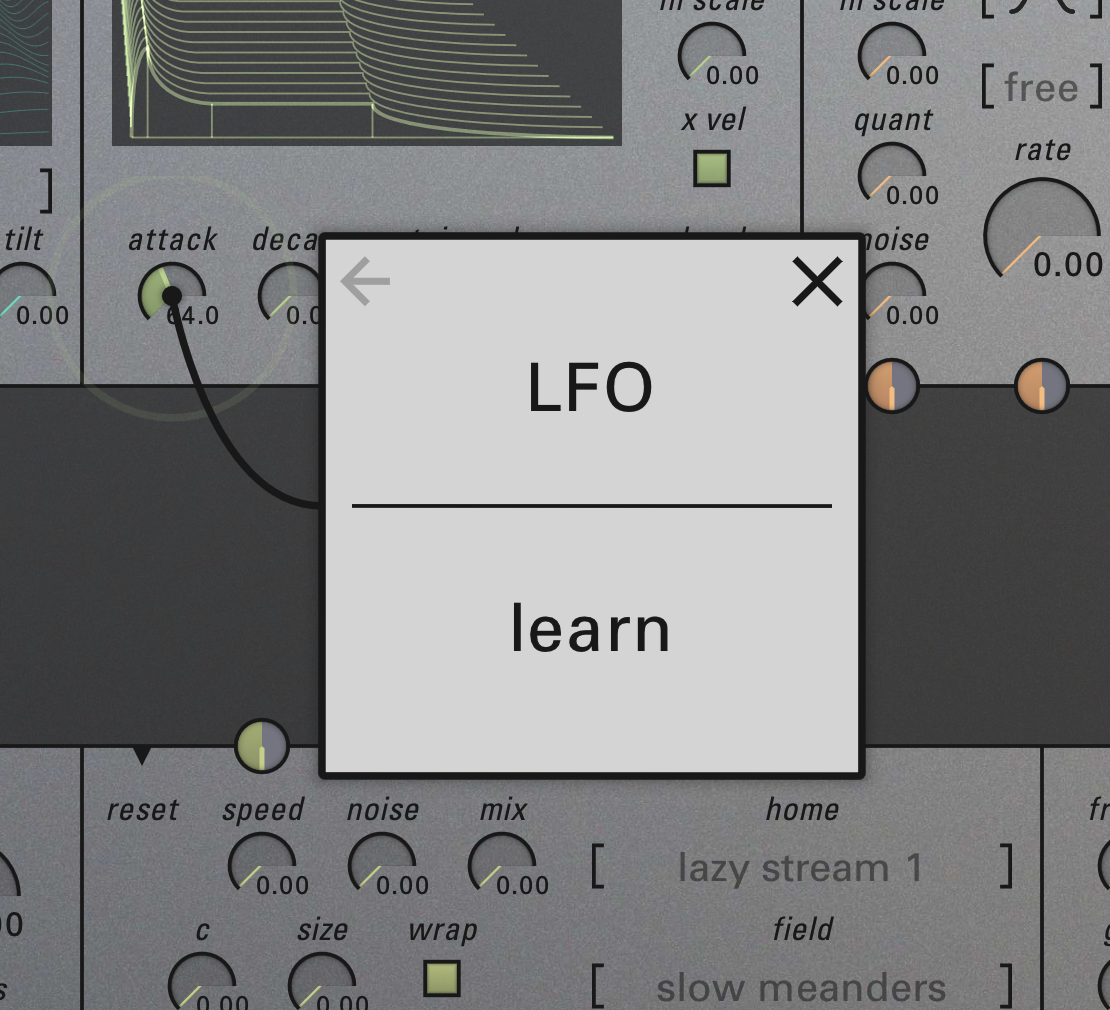
Sumu is an additive instrument that I've had in the works for a long time. Now that it's nearing completion and heading towards a public beta soon I'm going to break with the way I normally do things and put some detailed info out ahead of its release.
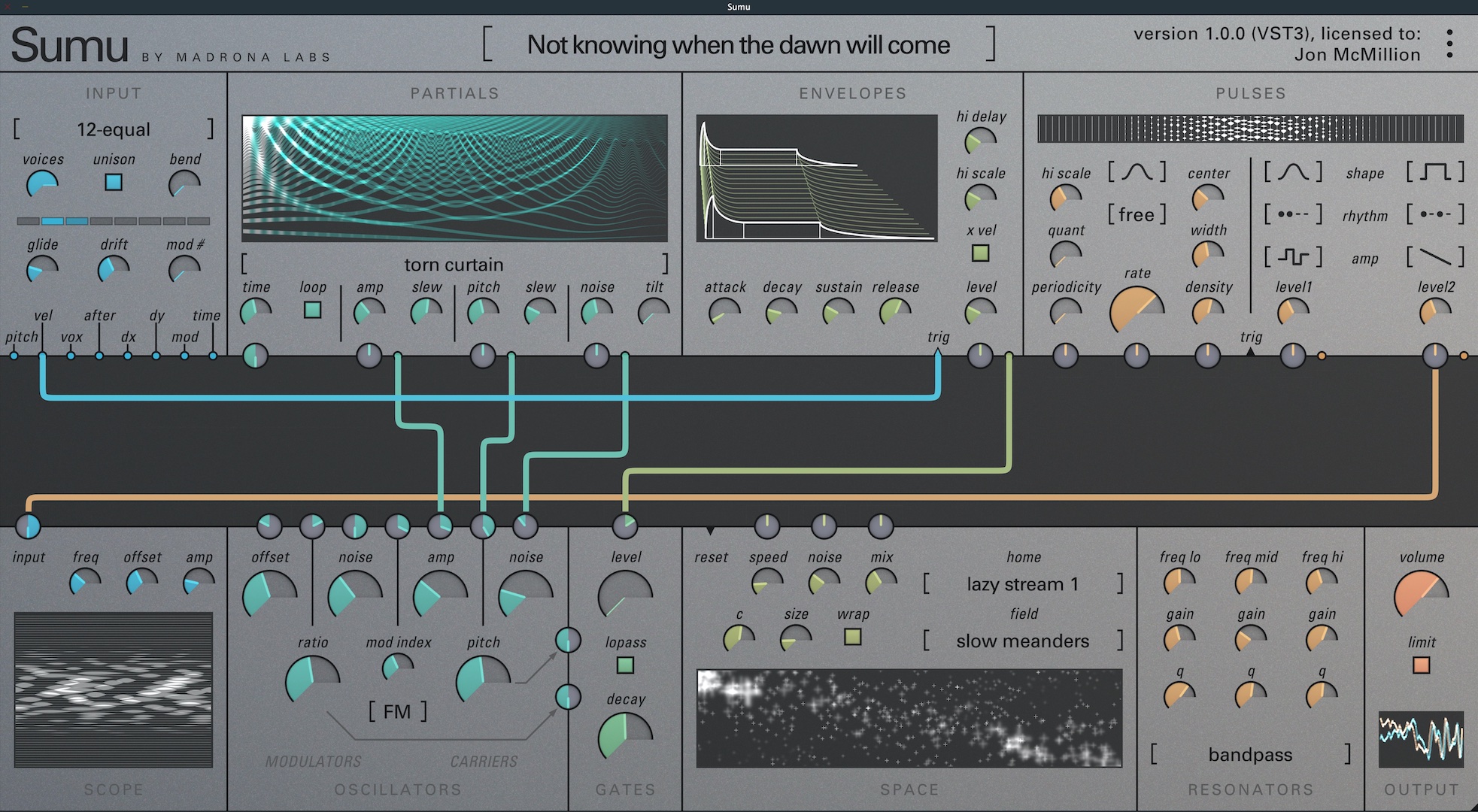
Sumu is another semi-modular instrument. It shares the general appearance of its patcher-in-the-center design with Aalto, Kaivo and Virta. As you can see, it's on the more complex end of the spectrum like Kaivo. Everything is visible at once and there are no tabs or menu pages to navigate, which suits the way I like to program a synthesizer tweaking a little something here, a little something there.
In the same way that Kaivo brought two different and compatible kinds of synthesis together, combining granular synthesis with physical modeling, Sumu combines advanced additive synthesis with FM synthesis.
What's most different about Sumu compared to my other synths is that the signals in the patcher are not just one channel of data, but 64—one for each partial in a sound! By keeping all these channels of data independent and still using the same patching interface, Sumu offers a very usable entry point into additive synthesis, and a range of musical possibilities that have only been approachable with high-end or academic tools or just coding everything yourself... until now.
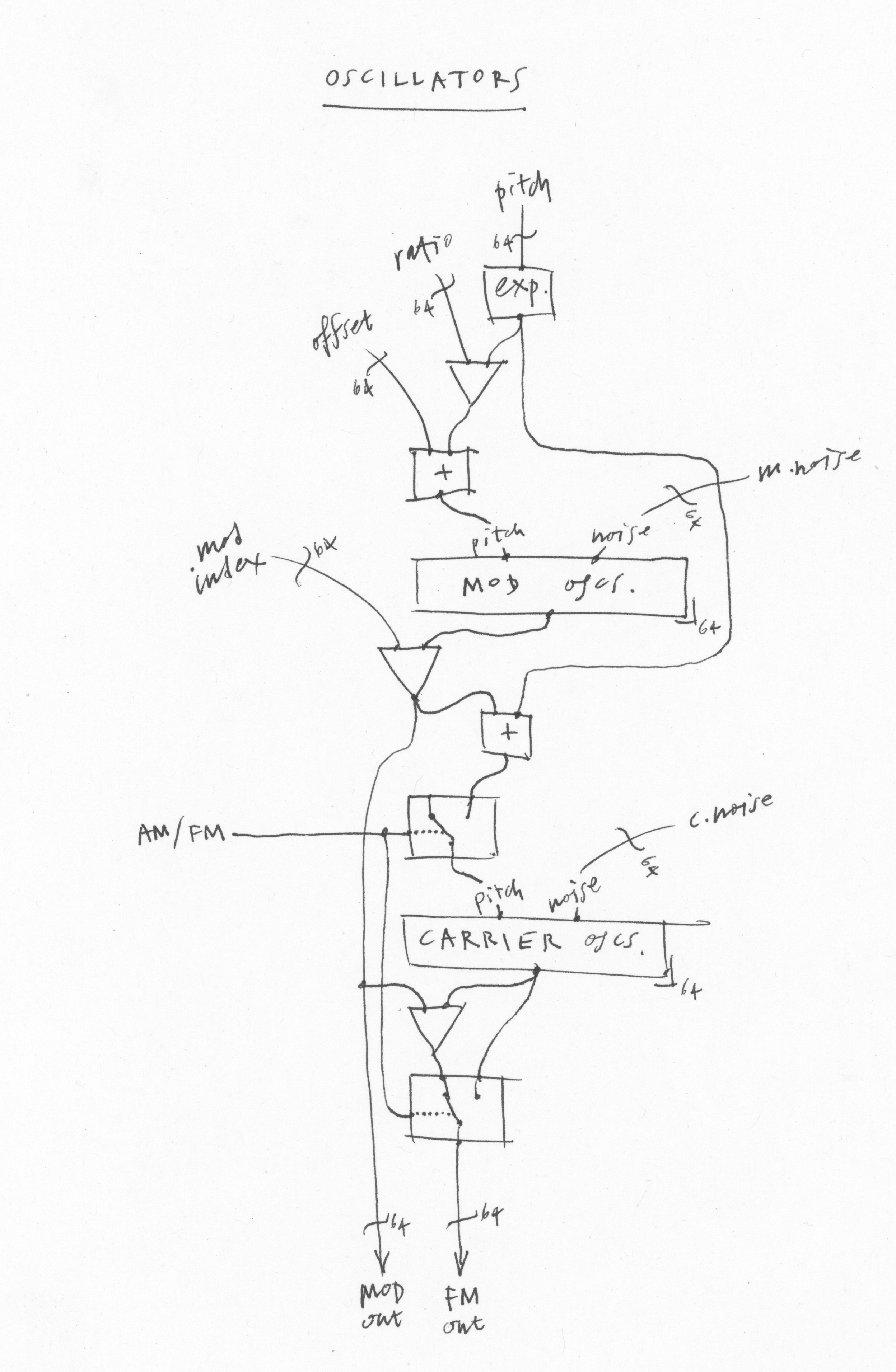
Each of Sumu's oscillators is the simplest possible kind of FM:a single carrier+modulator pair. And the modulator can produce a variable amount of noise, which like the modulation ratio and depth can be controlled individually per oscillator. In a single voice there are 64 such pairs. Obviously a lot of sounds are possible with this setup—in fact, with the right parameters varying appropriately we can reproduce any musical sound very faithfully with this kind of oscillator bank.
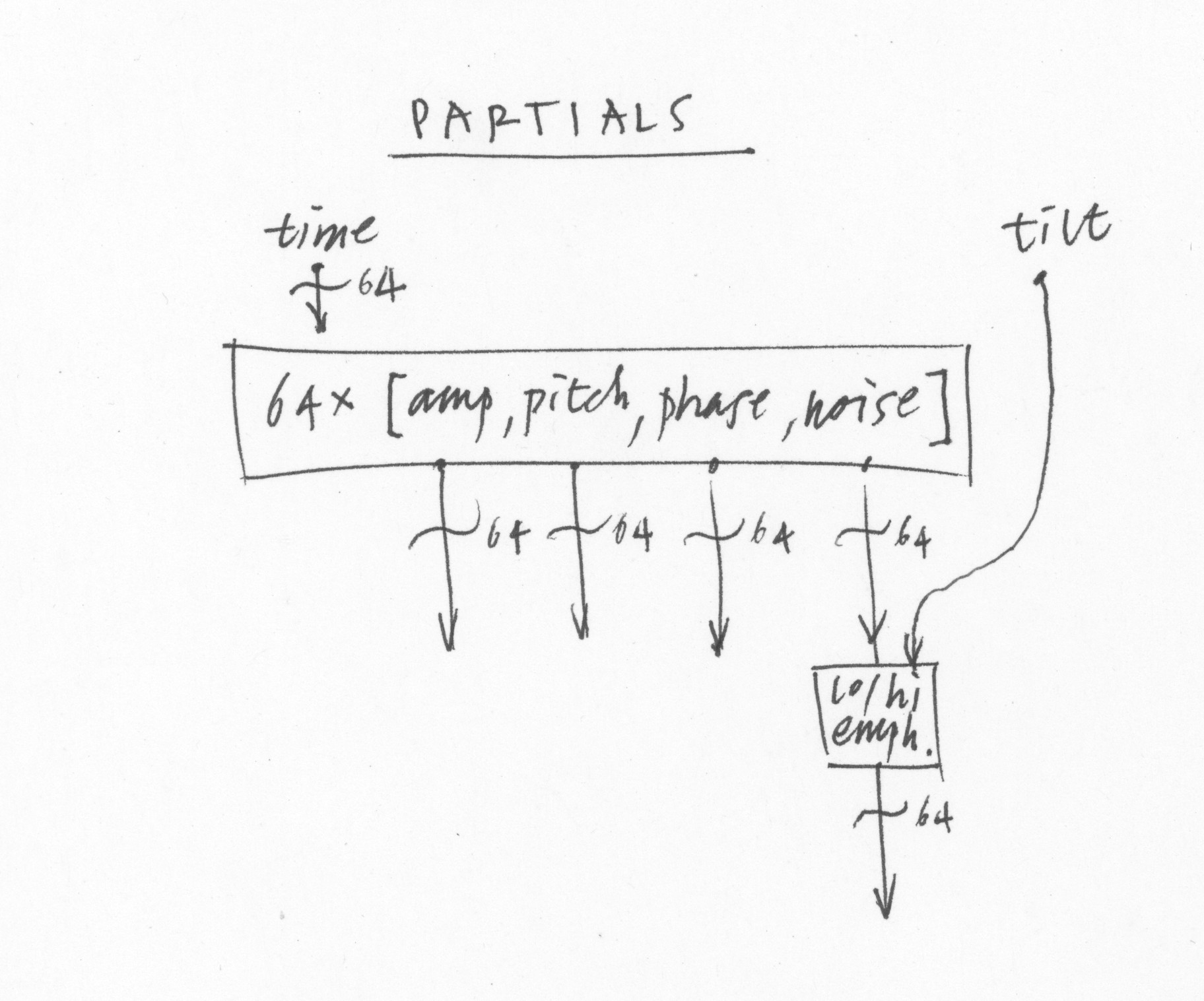
There are a few ways of generating all of those control channels without the kind of painful per-partial editing that some of the first digital synths used. The first is the PARTIALS module up top, where you can see a diagram of all the 64 partials over time. This is like a sonogram style of diagram where x is time, y is pitch, and thickness of each like is amplitude. There is also an additional axis for noisiness at each partial.
A separate application will use the open-source Loris work by Kelly Fitz and Lippold Haken to analyze sounds and create partial maps.
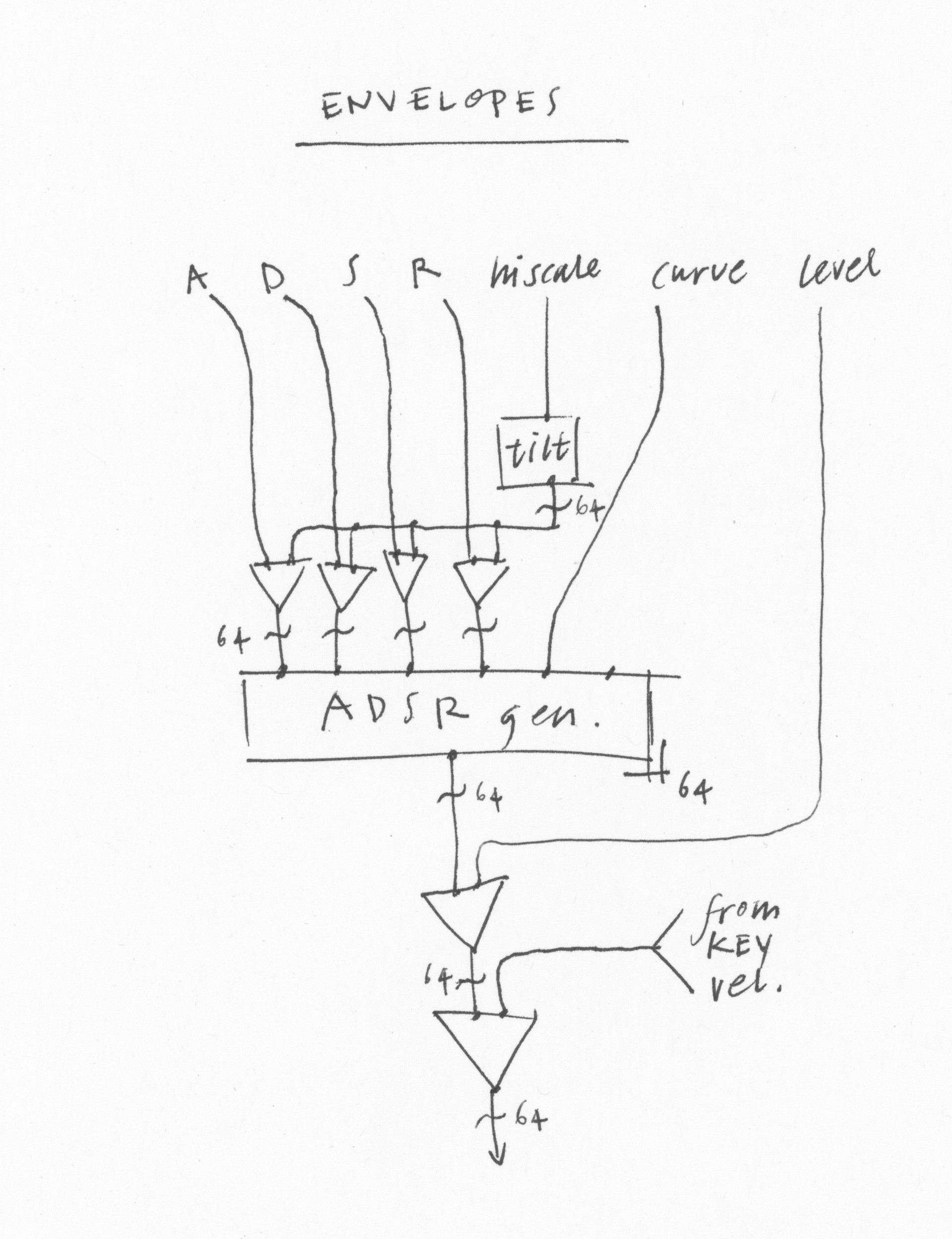
Another way of generating control data is with the ENVELOPES module. It’s a normal envelope generator more or less—except that it generates 64 separate envelopes, one for each partial. Generally you would trigger them all at the same time, but each does have its own trigger so they can be separate. Using the “hi scale” parameter the high envelopes will be quicker than the low ones, making a very natural kind of lowpass contour to the sound.
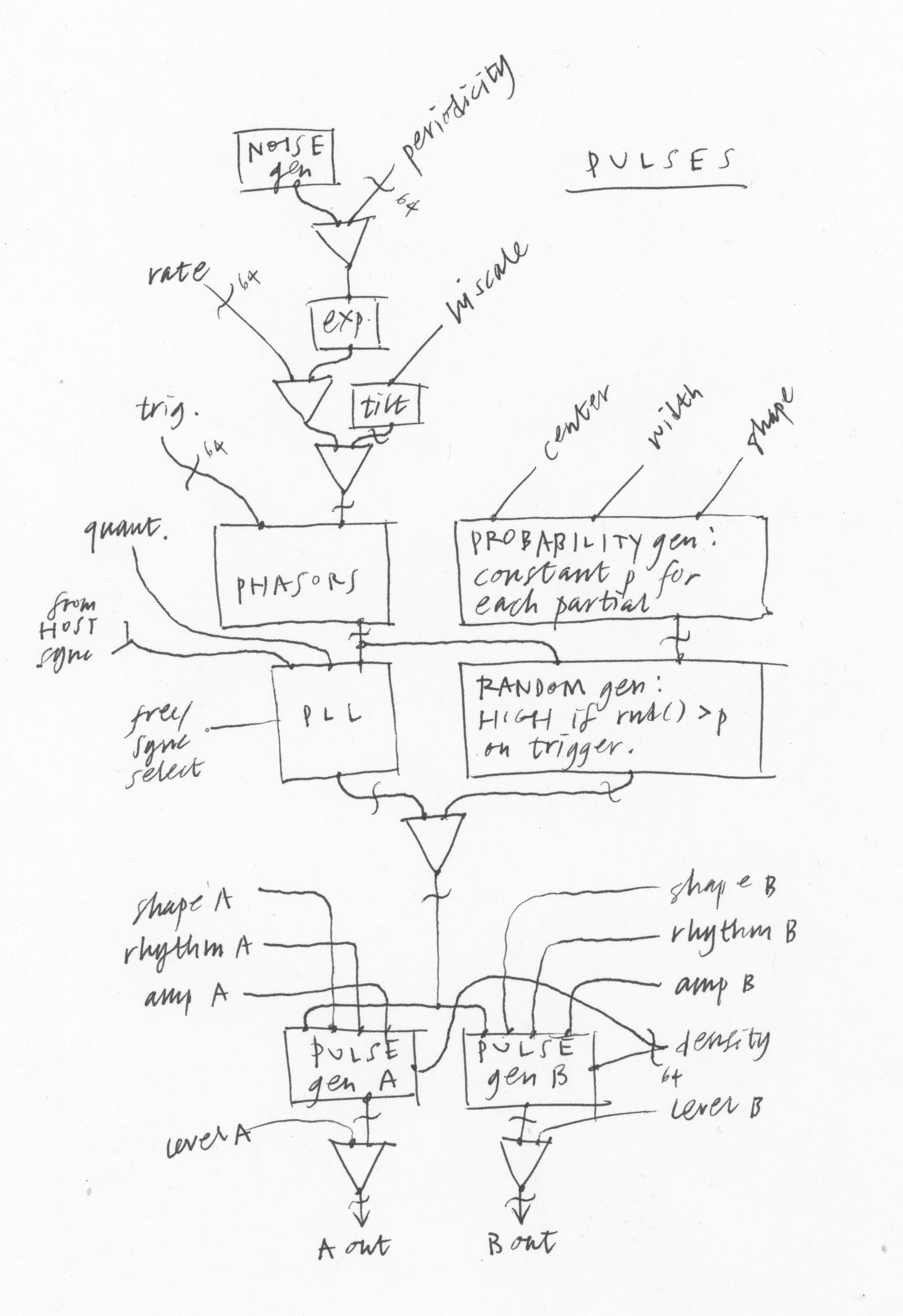
Finally on the top row there’s the PULSES module. This combines an LFO and a randomness generator into one module. The intensity and other parameters of the pulses can be different for every partial. So this makes modulations that can be focused on a certain frequency range, but you don’t have to mess around editing partials one by one. You could also, for example, use the pulses to trigger the envelopes all at different times.
The PULSES module was inspired by my walks in a small canyon near my house, and listening to the very finely detailed and spatially spread sounds of water running in a small creek. Each drop contributes something to the sounds and the interplay between the parts and the whole is endlessly intriguing.
To make a water drop sound, two envelopes are needed at the same time: a rise in pitch and an exponential decay in amplitude. So PULSES lets you put out two such envelopes in sync. Then of course we generalize for a wider range of functions, so we can find out, what if the drops were quantized, or had different shapes over time? A voice turning into a running river is the kind of scene that additive synthesis can paint very sensitively. The PULSES module is designed to help create sounds like this.
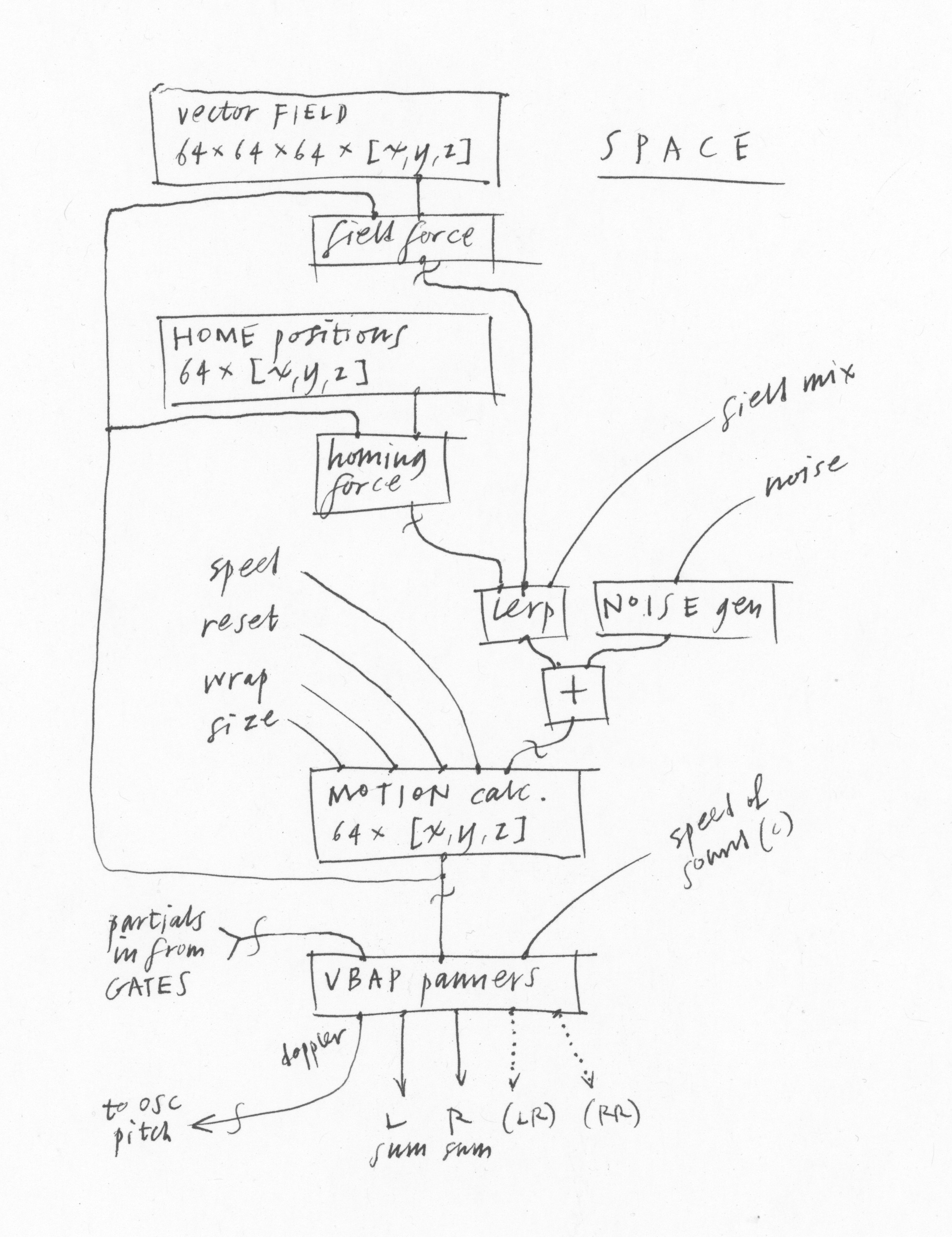
The SPACE module lets us position each partial in the sound independently. Coming back to the creek idea, we can hear that certain pitch ranges happen in certain locations around us due to the water speed and the resonances of different cavities. This all paints a lively acoustic scene. By positioning many little drops independently, while allowing some variation, we can approximate this kind of liveliness.
This module centers around two kinds of data, a set of positions for each partial known as home, and a vector field: a direction [x, y, z] defined at each point in a 3-dimensional space. There will be a set of both the home and the field patterns to choose from. By offering these choices, and a small set of parameters controlling the motion of the partials, such as speed, the homing tendency, and the strength of the vector field, we can quickly create a wide variety of different sonic spaces without the tedium of editing each partial independently.
The RESONATORS module is very simple and inspired by the section of the Polymoog synthesizer with the same name. It’s simply three state-variable filters in parallel, with limited bandwidth and a bit of distortion for that “warm” sound. In Sumu, a synth we could otherwise describe as “very digital,” it’s nice to have a built-in way of adding a different flavor.
So I have this interface you see above, and a sound engine, and I'm working feverishly to marry the two. To enable all of the animations and the new pop-up menu, I wrote a whole new software layer that provides a completely GPU-based UI kit and interfaces directly with the VST3 library. Because it's been such a long process this time, I'm going to "build in public" more than I am used to doing, and have a public beta period. My plan is for this to start in December. Meanwhile I hope this information gives you interested folks something to whet your appetites, and even a basis for starting to think about what kinds of patches you might want to make.
Wow Randy, this sounds very intriguing! Can't wait to hear it and try it out in the beta.
This is thrilling news! Very promising implementation of some very interesting ideas here. Looking very forward to trying it out as soon as it's ready. Thanks for sticking with this for so long--I am entirely confident that it'll be well worth the wait.
so hyped randy! loving the block diagrams and getting very inspired by this preview alone
I can't wait to play with this... or read the manual.
While it looks familiar with the patcher in the center, what a patch chord represents seems to be drastically different.
I can see that PARTIALS and PULSES can create a very complex streams of data that might not be intuitive or even make sense to be used as a modulator for the envelopes.
But there seems to be no way to modulate the ENVELOPES in any other way than the level scaling. In Aalto and Kaivo I make a lot of use of the VOX modulations source to shape different envelopes for each of the voices. It seems like it doesn't work like this with Sumu and I'm excited to figure out why that is :)
I hope it's because all that work is better done on a partial level anyway.
wow! sounds fascinating. can't wait to hear it. looks great btw.
This is going to be unbelievably creative, never seen anything remotely like it. Can't wait to help beta this and dig in - definitely going to be worth the wait.
Cheers, Randy. Thanks for sharing your deep talent for the world to participate with.
It looks very inspiring. Wow.
64 pairs of FM in a single voice...really really looking forward to hear it! This is the way a computer based synthesizer should be.
Finally! Looks awesome!
yes! again a soft synth with a very own character! as expected. simply great!
Very excited. I'm sure the long wait was worth it! Looking forward to the beta!
yes ! cool news Randy !
can't wait to test this baby
shared on our Experimental Music Software and Hardware group
Do you think you might offer a pre-order in time for christmas?
Thank you so much for your amazing work, really looking forward to try this out!
Exciting stuff, can't wait. lots of cool ideas here. can't wait to actually play around with it/test it
That is a very beautiful user interface, like a poem. I could be staring at it for hours.
Looking forward the release.
Take your time.
sumu! i would love to explore and to create presets…
OMG I can’t wait to check this out!
So stoked about this!
What’s the mysterious lfo/learn menu in the first screenshot?
Great rundown. Looking forward to seeing it come out. Is it too early for sound demo’s? Thanks for all the hard work this must have taken.
This looks amazing! Seems to be more then worth the wait. Would be very happy to beta this :)
Congrats! One of the most beautiful VSTs I’ve seen, can’t wait to try it.
Awesome!!! How do we get access to the Beta?
Whoa. This is fantastic news. Excited!
I'll announce the public beta soon. There will be a Discord forum and anyone who wants to can try it out.
Also more info on the popup menu later today! In the context of Aaltoverb, which also uses it. I'm really happy with this new design language and can't wait for you to see it moving...
That is a very beautiful user interface, like a poem.
I think there are similarities between these art forms! collecting a set of elements and presenting them in ways they can be recombined for multiple meanings... thanks for the kind words
So good to hear that the project is near to completion. I'm very, very excited to dive into Sumu’s sonic cosmos.
Just one question: when are you taking our money? :)
Oooft! This is exciting news!
VERY EXITED to hear about your use of Loris! Thank you for your excellent work!